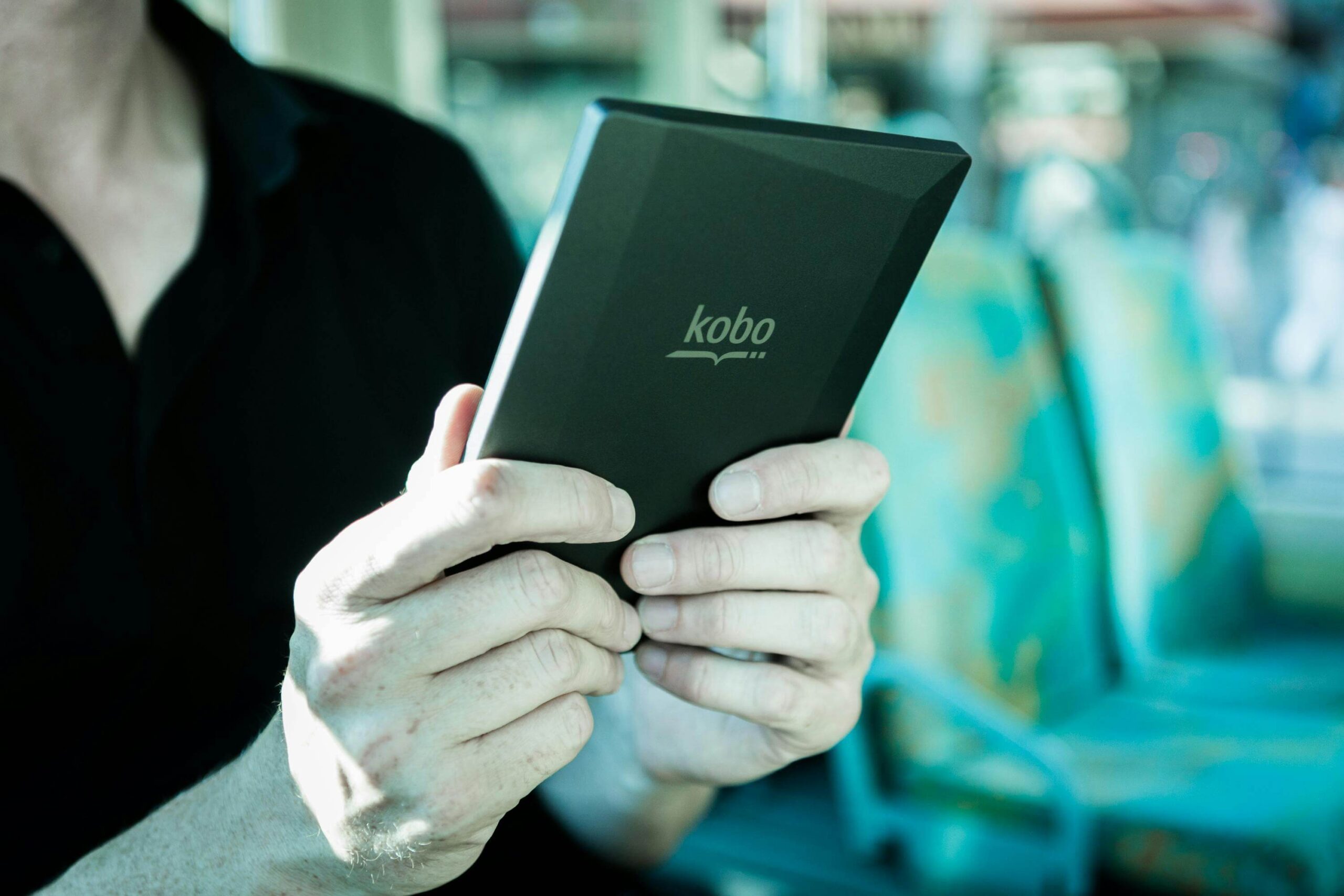
Readers aren’t all shopping on Amazon. Some are browsing Apple Books on their iPhones. Others are using Kobo eReaders, scrolling through local digital bookstores in Belgium, Singapore, or Mexico.
As an author, you can’t afford to wait for everyone to find your book in one place. You need to go where they already are, and that’s where Kobo Publishing comes in.
Kobo connects you to over 190 countries, many of which Amazon barely reaches. I’ve had downloads from countries I’ve never run ads in and never even mentioned in my newsletters.
That’s the beauty of Kobo’s partnerships with regional retailers and public libraries. Your book gets discovered in everyday shopping and reading experiences that don’t involve Amazon at all.
-
Kobo Publishing helps authors reach readers in over 190 countries, especially in markets Amazon doesn’t dominate.
-
Kobo Writing Life offers flexible pricing, regional promos, and author-friendly tools without requiring exclusivity.
-
Kobo Plus gives your book exposure through a growing subscription model in places like the Netherlands, Belgium, and Canada.
-
Authors can earn up to 70% royalties even on lower-priced books, depending on the market.
-
Success on Kobo requires intentional marketing, regional pricing strategies, and applying for internal promotional opportunities.
It also feels more author-centric. Kobo Writing Life gives you direct control over pricing by country, access to international promo opportunities, and the option to enroll in Kobo Plus without locking your book into exclusivity.
You can build a presence across markets instead of depending on a single platform’s mood swings.
Reaching readers shouldn’t feel like hoping they’ll stumble into your corner of the Internet. Kobo makes it easier to meet them in theirs. That shift alone can open up parts of the world where your story belongs, and where it actually gets read.
What Does Kobo Mean?
Kobo is an anagram of the word “book,” a fitting name for a company built entirely around the reading experience. It was founded in 2009 by a Canadian team that saw the shift toward digital reading long before it went mainstream.
Later, it was acquired by Rakuten, often referred to as the “Amazon of Japan,” which helped fuel its international expansion and technological innovation.
Today, Kobo is more than a place to buy eBooks. It offers a full suite of tools for both readers and authors. The platform supports eBooks, audiobooks, and a line of Kobo eReaders that are available in stores across multiple continents.
Its sleek devices rival the Kindle and often win favor with readers who prefer openness. Kobo supports formats like EPUB, which gives users more freedom with their digital libraries.
Kobo’s mission has always leaned toward accessibility and inclusivity. It partners with indie bookstores, local retailers, and libraries, so its catalog appears in storefronts that matter to local communities.
You’re not locked into a single ecosystem. You’re stepping into a network that’s purpose-built to reach readers in their own language, currency, and preferred device.
What started as a clever play on letters now stands for a serious publishing platform that empowers both readers and authors across the world.
Is Kobo Still Operating in 2025?
Kobo is fully operational and showing no signs of slowing down. In 2025, it continues to thrive as one of the most reliable alternatives to Amazon, offering a growing catalog of digital content, sleek eReaders, and a user-friendly publishing platform called Kobo Writing Life.
The company has doubled down on international growth, with Kobo Plus (its subscription service) gaining serious traction in Europe, particularly in countries like the Netherlands, Belgium, and Portugal.
Major partnerships keep Kobo in front of both casual and serious readers. You’ll find Kobo eReaders sold in Walmart across the U.S., FNAC stores throughout France, and Indigo bookstores in Canada.
These alliances make Kobo’s ecosystem accessible both online and in physical retail spaces, which adds credibility and visibility that digital-only platforms often lack.
Kobo Writing Life, the publishing dashboard for authors, continues to evolve. Real-time sales tracking helps you monitor performance by region, while the ability to control pricing per country gives you more flexibility than most platforms allow.
Uploading books is quick, and the interface feels clean and intuitive. When I published through Kobo Writing Life, I appreciated how painless the setup was. No learning curve. No technical roadblocks. Just a smooth process from upload to publish.
What really stands out is how Kobo continues to invest in features that support long-term author growth. The Promotions tab, for example, opens the door to curated deals that can boost visibility without draining your ad budget.
As other platforms become more complex or restrictive, Kobo is doing the opposite, making things easier for indie authors who want to publish wide and reach real readers around the world.

Is Kobo Available in the Philippines?
Yes, Kobo is available in the Philippines. And that’s great news for authors aiming to expand their global reach. Filipino readers can easily access the Kobo Books app on both Google Play and the App Store, making it simple to browse, buy, and read eBooks on smartphones or tablets.
Payments can be made using local credit cards or PayPal, which makes the buying process smooth and familiar for readers in the country.
You can also purchase Kobo eReaders through online marketplaces that ship to the Philippines, including platforms like Lazada and Shopee.
Some international stores also cater to Filipino customers and offer delivery options, which means tech-savvy book lovers who prefer eInk devices aren’t left out.
For indie authors, this opens up a fast-growing and often under-tapped Southeast Asian market. The Philippines has one of the highest smartphone penetration rates in Asia, and Filipinos spend hours each day online, especially on mobile devices.
This shift in digital behavior has made eBooks increasingly popular, especially with younger readers and busy professionals who prefer reading on the go.
My own books have landed in Filipino hands without me running any targeted promotions, which tells you something: readers there are actively browsing Kobo’s store and buying titles they relate to.
By listing your book on Kobo, you’re placing it in front of a mobile-first audience that might never visit Amazon but still craves quality stories and learning material.
Kobo’s presence in the Philippines also aligns with a broader trend: more Filipino readers are looking beyond Facebook or Wattpad and turning to platforms that offer curated, high-quality titles. That’s an opportunity you don’t want to miss.
Why Should You Consider Kobo Publishing?
You’re probably wondering what makes Kobo Publishing worth your time when Amazon, Apple Books, and Google Play already take up so much of the spotlight. But Kobo earns its place in your strategy for reasons that go beyond surface-level perks.
Global Reach
Kobo gives your book visibility in over 190 countries. That includes places often overlooked by Amazon, such as Belgium, Mexico, Japan, and the Philippines. It’s ideal for authors looking to build a wide, diverse reader base.
I remember being caught off guard by a spike in downloads from South Africa. No ads. No local promo. Just organic discovery through Kobo’s local partners. It reminded me that readers all over the world are browsing digital shelves that Amazon doesn’t always reach.
High Royalties
Kobo pays up to 70% royalties on books priced at $2.99 or higher, and in some markets and formats, you can still earn that rate even on lower-priced titles. That flexibility helps when you’re testing new pricing strategies or running discounts. You’re not boxed into a narrow range to get the best payout.
Kobo Writing Life Tools: The dashboard is built for clarity and control. You can set pricing by country, run promotions, and check real-time sales performance, all without going through layers of approval or support tickets.
When I first uploaded a book, the process was smooth and fast. No formatting headaches, no guessing games.
Kobo Plus Subscription
Think of it like Kobo’s answer to Kindle Unlimited, but without the strings attached. Readers pay a monthly fee to access thousands of titles, and authors get paid based on how much readers engage with their books.
It’s an easy way to gain exposure in places like the Netherlands and Belgium, where Kobo Plus is growing steadily.
You stay in full control of your distribution because Kobo doesn’t require exclusivity. That means your book can be part of Kobo Plus and still be listed on Google Play Books, Apple Books, and Barnes & Noble.
No Exclusivity Required
You’re free to publish wherever you want, however you want. That freedom opens the door to multiple income streams and audience segments without the pressure to commit to just one store.
For authors like me who prefer to keep things wide and flexible, this alone makes Kobo Publishing a solid asset in any indie publishing plan.
Kobo Publishing isn’t about chasing the biggest crowd. It’s about reaching readers who are often overlooked, in markets that are still growing, using tools that give you real control.
Whether you’re launching your first book or expanding a backlist, it’s a platform that makes it easier to think long-term and publish globally.

Kobo vs Kindle: What’s the Difference?
At first glance, Kindle and Kobo might seem interchangeable. They both offer eReaders, self-publishing platforms, and digital storefronts.
But once you start publishing, the differences quickly become obvious. The experience, tools, and opportunities each one provides can lead to very different outcomes depending on your goals as an author.
Devices
Kindle eReaders are designed to keep readers inside the Amazon ecosystem. You’re tied to Amazon formats and storefronts, and sideloading other files isn’t the most intuitive process. Kobo eReaders, on the other hand, are open-source-friendly.
They support EPUB files out of the box and integrate with OverDrive, which connects directly to public libraries around the world. That gives readers more flexibility, and in some markets, it gives your book a better shot at being borrowed or discovered through local library systems.
Subscription Services
Kindle Unlimited can boost visibility, but there’s a catch. You have to enroll your book exclusively with Amazon through KDP Select. That means you can’t list your book on Google Play Books, Apple Books, or Kobo while it’s in the program. Kobo Plus takes a different approach.
You can opt into the subscription model without giving up control of your distribution. Your book gets exposure to subscription readers, and you’re still free to sell it on other major platforms. For authors who want to keep things wide, that freedom makes a huge difference.
Global Presence
Amazon is dominant in the U.S., UK, and a few large European markets. Kobo performs especially well in Canada, France, the Netherlands, Japan, and parts of Latin America and Southeast Asia.
It fills in the gaps where Amazon has little to no local visibility. I’ve seen this firsthand. My Kobo dashboard lit up with sales from countries that never once appeared in my KDP reports.
Publishing Tools
Kobo Writing Life gives you a clean, easy-to-navigate dashboard with useful features like custom pricing by country, quick content uploads, and straightforward promotional tools.
Kindle’s backend offers more detailed analytics, but it comes with stricter metadata rules and more red tape when it comes to promotional campaigns. Kobo feels like it’s built for indie authors who want agility. You can adjust things fast without jumping through hoops.
Royalties
Kobo pays up to 70% royalties across a wide range of countries. You also have more flexibility when pricing lower than $2.99, depending on the market. Amazon KDP, by contrast, only gives you the 70% rate if your book is priced between $2.99 and $9.99, and even then, only in select regions.
Kobo offers more earning potential in non-U.S. markets and allows you to test different pricing models without penalty.
Publishing on both platforms absolutely makes sense for a wide-reach strategy. But if you’re weighing which one offers more long-term flexibility and better international traction, Kobo Publishing is hard to ignore.
It gives you the tools to reach readers Amazon may never touch, and that alone can open doors you didn’t even know existed.
Pros and Cons of Kobo Publishing
Here are the real trade-offs you need to weigh before diving into Kobo Publishing. Like any platform, it has its strengths and its limits, but knowing both sides helps you make smarter decisions as an indie author.
Pros:
Access to over 190 countries
Kobo’s global reach gives your book a real shot at finding readers far beyond the usual markets. You’re not limited to English-speaking countries or major Western audiences.
Kobo’s distribution includes partnerships with regional retailers, libraries, and even mobile carriers in places where Amazon has little traction. That opens up organic sales in countries where competition is lighter but interest in digital reading is rising fast.
Higher royalty potential on lower-priced books
The flexibility in Kobo’s royalty structure is a relief when you’re experimenting with pricing. You can still earn up to 70% royalties in many countries, even on titles priced under $2.99.
That’s a major advantage when you’re launching short stories, novellas, or budget-friendly reads aimed at price-sensitive markets.

Non-exclusive publishing model
There’s no need to lock your book into one store. With Kobo, you can publish wide and still access powerful tools, including Kobo Plus and in-store promotions.
I’ve used this freedom to keep my books available on Google Play, Apple Books, and other platforms, all while running regional promos on Kobo without breaking any terms.
Direct promotional tools within the dashboard
Once you’re approved, the Promotions tab inside Kobo Writing Life lets you submit your titles for various deals: daily deals, category features, and curated email promotions by region.
These slots are competitive, but the process is transparent and straightforward. You know what you’re applying for, how much it’ll cost, and how long it’ll run.
Friendly and responsive author support team
Kobo’s support feels like it was built for authors. On the few occasions I’ve had to reach out, I’ve received helpful replies that actually solve problems, not canned responses or copy-pasted FAQs.
It makes a big difference when you’re navigating metadata issues or trying to qualify for a promotion.
Cons:
Less visibility in the U.S. compared to Amazon
Amazon still leads the market in the United States, and that makes it harder for Kobo to compete on volume in that region. Most of your U.S. sales are likely to come from KDP unless you do targeted promo campaigns on Kobo.
Requires more effort in self-marketing
Kobo won’t magically drive traffic to your book. You’ll need to bring your own readers, build your newsletter list, or apply for promos to gain traction. It rewards consistency and long-term thinking, not one-off uploads.
Doesn’t support print publishing
Kobo focuses on digital, so you’ll need to use third-party platforms like Draft2Digital or IngramSpark for print distribution. The good news is that D2D can push your eBook to Kobo too, but for authors who want to manage everything in one place, that’s an extra step to plan for.
You’ll need approval to promote
You won’t see the Promotions tab right away. You need to email the Kobo Writing Life team and request access. They’ll look at your catalog, metadata, and formatting to decide.
Once approved, you’ll be able to run paid promotions through Kobo’s internal tools, but you need to earn your spot first.
There’s a clear learning curve to Kobo Publishing, but the benefits add up over time, especially if your strategy includes building a global readership and avoiding exclusivity.
It’s not a one-size-fits-all platform, but it’s one of the few that actually gives you space to grow on your own terms.
How to Start Publishing on Kobo
Getting started is easier than you think, and the whole process takes less time than most people expect. Once you’re set up, Kobo Publishing becomes one of the smoothest platforms to manage.
1. Go to Kobo Writing Life and create an account.
Signing up is free and takes just a few minutes. You’ll be asked for basic information like your name, author bio, and payment details. Kobo pays via PayPal or direct deposit, depending on your region, so setting that up early keeps things seamless.
2. Upload your manuscript in EPUB format
Kobo requires EPUB files, which are the standard for most non-Amazon eBook stores. If your manuscript is still in Word or PDF, tools like Calibre or Draft2Digital can convert it for free.
Personally, I’ve used Draft2Digital’s formatting tool several times. It’s fast, clean, and doesn’t mess with your layout. You can also upload a separate cover image, so make sure it’s professionally designed and fits Kobo’s recommended dimensions (usually 1600 x 2400 pixels or higher).
3. Set your book title, author name, categories, and pricing
Kobo lets you assign multiple categories and sub-genres, which helps readers find your book through search and browse features. Take time with your metadata. This step plays a big role in visibility. Pricing is flexible, and you can set different prices for different countries.
That helps if you’re targeting readers in places like India or the Philippines, where lower price points convert better.

4. Choose where to sell your book and whether to enroll in Kobo Plus
Kobo lets you select which countries your book is available in. By default, it covers everywhere the store operates, but you can limit it if needed. You’ll also see an option to enroll in Kobo Plus, their subscription model.
I recommend testing this out, especially if you’re publishing in territories where Kobo Plus is popular, like the Netherlands or Belgium. You’re still allowed to sell your book on other platforms, which gives you more freedom than Amazon’s KDP Select.
5. Hit publish and watch it go live within 72 hours
In most cases, your book appears on the Kobo store within a day or two. Once it’s live, you’ll get access to a clean and simple dashboard that tracks your real-time sales, downloads, and royalty earnings. You can even filter by country to see where your readers are coming from.
Kobo also allows you to set up free or discounted pricing for promotional campaigns, and you can schedule these in advance. Once your Promotions tab is approved, you’ll also be able to submit your book for curated Kobo deals, which can significantly boost your visibility in key regions.
The entire system is intuitive once you go through it once or twice. There’s no need to be tech-savvy or deal with complicated formatting rules. Kobo Writing Life makes the publishing experience feel author-first, and that’s a refreshing change when you’re juggling multiple platforms.
Tips to Succeed on Kobo as an Indie Author
Use these practical strategies to make your Kobo launch successful. The platform has global reach, but making the most of it takes a little intention and planning.
Apply for access to the Promotions tab inside Kobo Writing Life
This is where the magic happens. Kobo’s internal promotions feature lets you submit your book for featured slots, email campaigns, and regional deals. It’s not automatic. You’ll need to email the Kobo Writing Life team and request access.
Once approved, you can apply for high-visibility promos targeted at specific countries, genres, or sales events. I remember getting a spot in a Canada-focused promo. It led to a noticeable bump in downloads and reviews that carried over well beyond the deal period.
Use social media and newsletters to direct traffic to your Kobo book link, especially during promos
Getting into a Kobo deal is just the first step. Driving traffic to it is what makes it work. Social platforms like Instagram, TikTok, and Facebook are helpful, but your email list is gold.
During my first Kobo promotion, I sent out a short, personalized email to my list with direct links to the Kobo store instead of Amazon. That small switch showed readers I was available everywhere, and a few even told me they preferred Kobo’s interface.
Set pricing that reflects each market’s buying power
What works in the U.S. doesn’t always work in Asia or Latin America. Kobo lets you customize pricing by country, and that flexibility is a huge asset. I’ve found that offering slightly lower prices in the Philippines and India helped convert casual browsers into buyers.
You’re not forced to follow a flat USD rate across the board, which means you can experiment with localized pricing that respects what readers can realistically afford.
Add your books to Kobo Plus for discoverability in countries where the subscription model is popular (Netherlands, Canada, Belgium)
Kobo Plus is gaining momentum in several markets. Enrolling your book in the program increases the chances of showing up in subscription search results and curated lists.
It’s particularly effective for authors with a series or multiple titles, as readers tend to binge-read when they’re already subscribed. I’ve seen consistent monthly income from Kobo Plus reads, even from backlist titles that hadn’t been moving much otherwise.
The best part about Kobo is that it rewards long-term thinking. You won’t always see instant results, but the more effort you put into optimizing your presence through promotions, regional pricing, and direct reader outreach, the more your catalog works for you in the background.
It’s a platform built for global reach, and these strategies help you unlock that potential.

Is Kobo Publishing Still Worth It in 2025?
Absolutely. Kobo Publishing is still one of the smartest moves you can make as an indie author in 2025. You get global distribution, flexible pricing, and 70% royalties, all without being forced into exclusivity. You keep control over your book while opening doors in markets Amazon doesn’t fully reach.
What stood out to me early on was how Kobo books found their way into countries I hadn’t even thought to target.
I wasn’t running Facebook ads, I wasn’t doing blog tours, yet the dashboard showed downloads from readers in the Netherlands, Malaysia, and South Africa. That kind of reach gives your book a second life outside the crowded U.S. and UK markets.
It also gives you breathing room. You’re not stuck playing the algorithm game or waiting for one storefront to decide your book’s fate. You’re building a presence in different countries, languages, and price brackets.
Kobo lets you earn in multiple currencies and gives you space to experiment with subscription income through Kobo Plus, limited-time discounts, or niche pricing for specific regions.
You don’t have to give up on Amazon. You can still list your books there and use it to your advantage.
But sidelining Kobo or uploading there without a plan is leaving money and opportunity behind. Your book deserves more than one storefront. It deserves every shot at being read by every type of reader who’s looking for stories like yours.





Pingback: How to Use Reedsy to Hire Editors, Format Books, and Publish